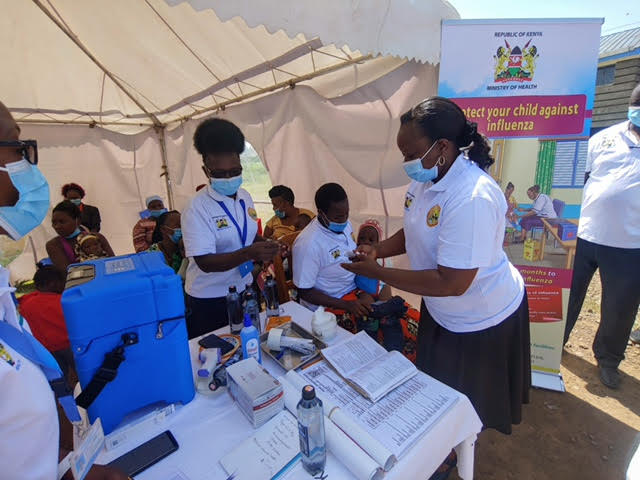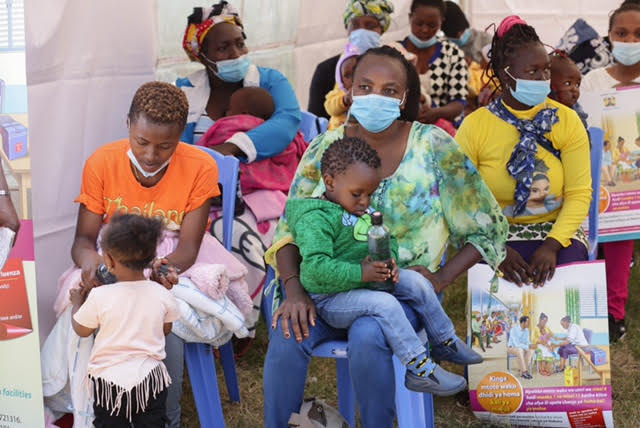NAIROBI, Kenya, Jun 8- The Ministry of Health has intensified the campaign to vaccinate children against Influenza, a highly infectious viral disease that affects the human respiratory tract and kills about 1,000 every year in Kenya.
Through the National Vaccines and Immunization Programme and the Division of Disease Surveillance and Response, the ministry seeks to vaccinate children aged six months to one year 11 months.
Last week, the group with a team from Washington States University (WSU) vaccinated children in Nakuru and will continue in the coast over the weekend.
Dr Jeannette Dawa, a lead researcher in the project from WSU, said they are targeting children because “Influenza disease is most severe in children under five years, and more specifically those less than two years of age.”
The vaccination will test a small population before the government rolls the vaccine out to the public and include it in the national vaccination plan.
It will target two counties, Mombasa (Jomvu sub-county) and Nakuru (Njoro Sub-County). Dr Dawa said they selected the sub-counties because they have “diverse geographical and socio-cultural characteristics important in assessing vaccine uptake.
The project began in October 2019 and was scheduled to end until October 2021 but was interrupted by the Covid-19 pandemic.
The Ministry of Health has the Severe Acute Respiratory infections (SARI) surveillance system that records every person coming to hospitals with acute respiratory infections. According to this system, Influenza causes as many as 57,000 and 81,000 illnesses requiring hospitalization every year.
According to the World Health Organisation (WHO), people are generally affected by two types of influenza A or B. Influenza infection is transmitted through respiratory droplets (like when someone sneezes) or when an uninfected person touches an infected one.
When they fall sick, they experience fever, headache, pain in the muscles (myalgia), sore throat and cough. At this point, it is impossible to distinguish it from other respiratory viral diseases without laboratory confirmation. In addition, there is a subtype C that causes mild cold.
However, some A subtypes infect animals primarily but still manage to spill over and cause pandemics, such as the 2009 swineflu pandemic, which killed more than 12,000 all over the world.
The virus causes loss because when people are sick, they cannot work, and mothers spend most of their times looking after their sick children.
While studies have shown that vaccines can reduce influenza illness by an average of 50 per cent, Kenya does not have a public Influenza vaccine. Instead, private hospitals offer the vaccine at the cost of Sh5,000, which is beyond reach for many and often achieve no more than 30,000 individuals vaccinated per year.
In 2016, the Ministry of Health’s National Immunisation Technical Advisory Group, Kenitag, recommended that since Kenya did not have experience rolling out influenza vaccines, researchers should pilot the influenza vaccination project.
“We are assessing the coverage, costs and impact of both the year-round and three-month vaccination strategies,” Dr Dawa wrote.
Want to send us a story? Contact Shahidi News Tel: +254115512797 (Mobile & WhatsApp)



